#Doomed Megalopolis
Text

Illustration by Suehiro Maruo
for Teito Monogatari
33 notes
·
View notes
Text
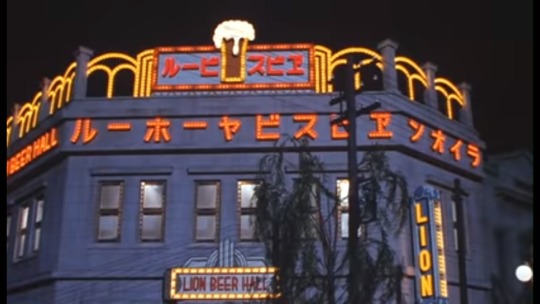
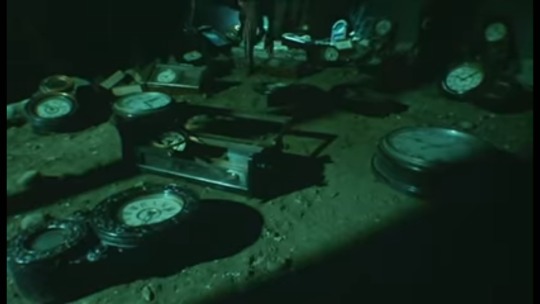

tokyo: the last megalopolis
7 notes
·
View notes
Text
Recently Viewed - Tokyo: The Last Megalopolis
Above all else, Tokyo: The Last Megalopolis is a triumph of production design. From the intricately detailed miniature models and matte paintings to the elaborate costumes and soundstages to the charming Harryhausen-inspired stop-motion creature effects, every cent of the enormous budget is clearly evident. Hell, even the lighting—the radiant shimmer of sunlight reflecting off the surface of turbulent water, the eerie pale glow of the full moon peering through a blanket of dry ice clouds, the ominous neon glare of supernatural power—is absolutely immaculate.
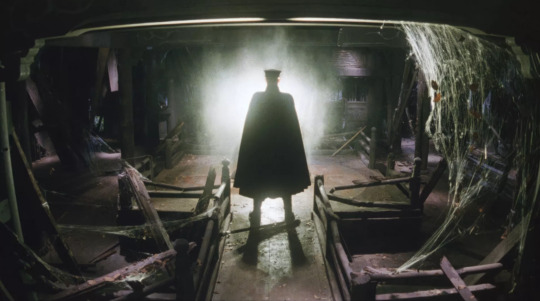
The film’s spectacular imagery perfectly matches its themes, which revolve around the conflict between tradition and modernization. At the dawn of the twentieth century, Japan’s cultural leaders have become increasingly obsessed with urban redevelopment as a means of competing on the world stage. Rich industrialists, for example, propose the erection of towering skyscrapers that rival the gods in stature—ostentatious symbols of material wealth (as well as hubris, considering the country’s frequent earthquakes). Nationalistic, xenophobic militarists, on the other hand, argue for “practicality” over hollow aesthetics—borders, walls, and fortifications have far more strategic value than gaudy architecture. Scientists, meanwhile, prefer technological advancement to politics and commerce, embracing the logistical challenges of constructing a vast subterranean railway system. Those attuned to spiritual matters—monks, mediums, practitioners of geomancy—urge these various parties to exercise caution and moderation in their pursuit of the “future,” warning that such unrestrained expansion risks irrevocably tarnishing the sanctity of the land, thus provoking the wrath of ancestral ghosts and guardian deities. “Progress,” after all, can be a destructive force; occasionally, building something new requires burning down the old. These concerns, however, are dismissed as invalid and irrelevant—as obsolete as magic and mysticism in the era of automobiles, engineering, and electricity.
Despite this compelling premise, the plot is rather jumbled, disjointed, and unfocused. Among the sprawling (and bloated) ensemble cast, no single character ever really emerges as a true “protagonist”; vaguely sketched archetypes are introduced rapidly and vanish just as abruptly, only to reappear at seemingly random intervals. In terms of personality and motivation, they’re nearly indistinguishable; consequently, the audience has little opportunity to form a proper relationship with them. Basically, they’re merely props, existing for the sole purpose of communicating exposition and propelling the story from one set piece to the next—they’re functional, but not terribly memorable.
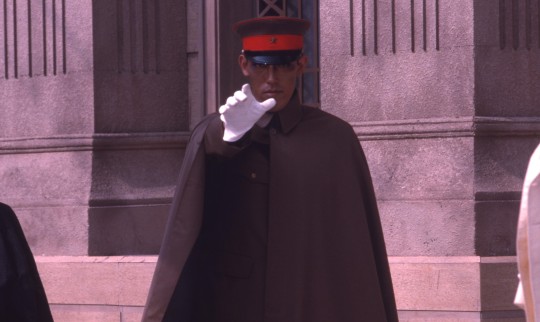
Fortunately, the central villain alleviates this flaw to a significant degree. With his dark, sunken eyes and sharp, almost skeletal facial features, Yasunori Kato is instantly iconic—the epitome of “screen presence.” He exudes menace, personifies malice; every deliciously diabolical line of dialogue that he delivers in his deep, gravelly growl is pure poetry, sending chills of terror down the viewer’s spine. Any scene that excludes him suffers for the omission—though even when he’s absent, his implicit threat still lingers, haunting the frame like a lurking specter, a whispered promise of calamity and impending doom.
Ultimately, director Akio Jissoji’s competent craftsmanship compensates for the movie’s minor formal and structural shortcomings; some mild narrative incoherence notwithstanding, Tokyo: The Last Megalopolis rarely fails to entertain. At the very least, it deserves credit for sheer ambition; precious few blockbusters nowadays dare to be this defiantly audacious and unconventional. Indeed, its superficial blemishes simply make its stylistic virtues more obvious and admirable. Warts and all, it is an essential genre masterpiece, worthy of being ranked alongside such horror classics as The Exorcist, Phantasm, and A Nightmare on Elm Street.
#Tokyo: The Last Megalopolis#Doomed Megalopolis#Doomed: The Last Megalopolis#Teito Monogatari#Yasunori Kato#Japan Society#Japanese film#Japanese cinema#Akio Jissoji#Kyusaku Shimada#film#writing#movie review
3 notes
·
View notes
Text
I still find it fascinating that a lot of people in the UK didn't grow up with 90s anime. You didn't even need Sky!! ITV's CITV and SMTV Live aired Digimon, Cardcaptor Sakura and Pokémon while Channel 5's Milkshake aired Beyblade.
And I've just done a search and Channel 4 apparently aired 3×3 Eyes, Doomed Megalopolis, The Legend of the Four Kings, Cyber City Oedo 808 and Devilman?? I'm really surprised people didn't grow up with anime as much as the cartoons they watched here but to each their own I guess.
#90s anime#cardcaptor sakura#Pokémon#Digimon#Beyblade#beyblade g revolution#beyblade v force#3×3 Eyes#anime#Doomed Megalopolis#The Legend of the Four Kings#Cyber City Oedo 808#Devilman#citv#smtv live#itv#channel 4#sky kids#sky
5 notes
·
View notes
Text
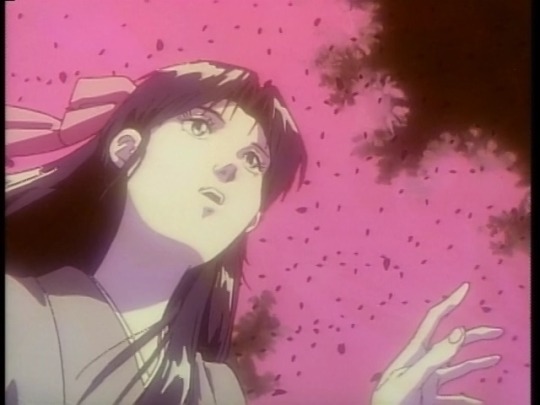
Doomed Megalopolis | 帝都物語, 1991-92
“Tokyo was burning. Many people will die.”
#doomed megalopolis#帝都物語#teito monogatari#hiroshi aramata#rintaro#historical fantasy#horror#supernatural#90s anime
12 notes
·
View notes
Text
Animation Night 134: Rintaro’s OVAs
Hi everyone! Welcome back to Animation Night.
Tonight we’re coming back to Rintaro, or りんたろう (or Shigeyuki Hayashi, but the pseudonym is near universal). This time I even found a picture of him!
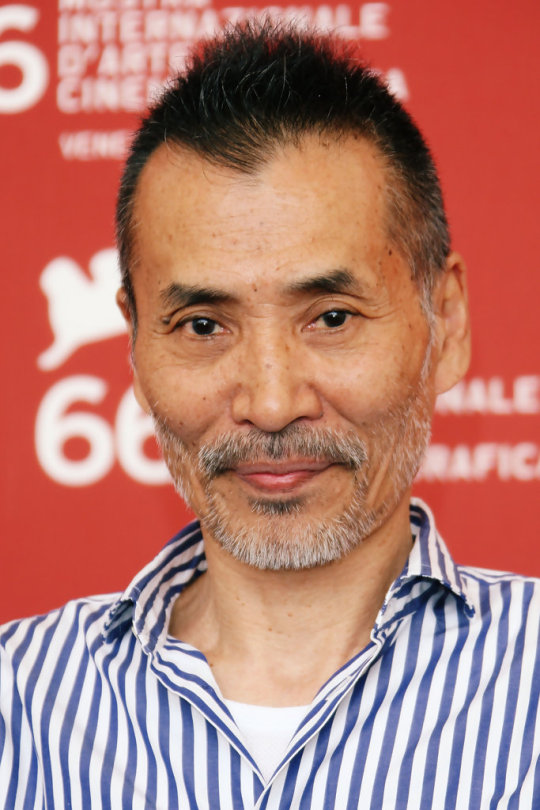
Rintaro one of the oldest of the anime old school to still be alive. He joined the anime industry as an inbetweener on Toei’s landmark film The Legend of the White Snake in 1958 and Astro Boy - but in his own right, he’s also a co-founder of Madhouse alongside people like Osamu Dezaki (Animation Night 95), Yoshiaki Kawajiri (25, 67) and Masao Maruyama (later, founder of MAPPA). He directed such classics as Space Captain Harlock (1978) and Galaxy Express 999 (AN62), he helped create the network of connections that led to Akira, he did a chapter of Tezuka’s Phoenix (AN80) he was still going strong in the 2000s with Metropolis (53).
He is, in short, one of the most significant directors in anime. And yet, to actually find out much about him beyond the films he’s made and the places he’s worked is surprisingly hard. Even in interview, his answers are a little vague. But then, the anime and manga industry are full of reclusive, shy creators. So let’s look at the films...
...or rather, let’s look at the OVAs! Look at them with our mouth eyes.
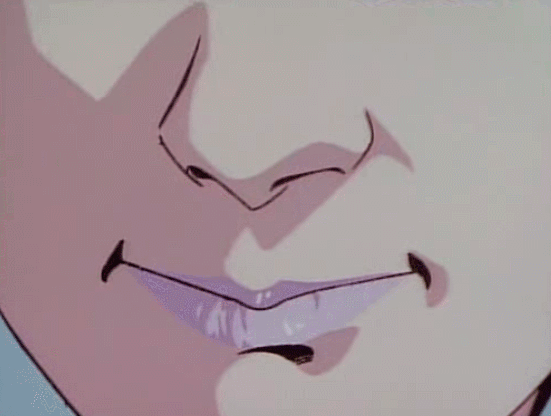
Pop.
Rintaro spent the late 70s and early 80s working not at Madhouse but at Toei, which was a chance for him to spread his wings outside of the shadow of Dezaki. This was the Captain Harlock era, and the Galaxy Express 999 era, the latter’s remarkable film building the important connection with Yoshinori Kanada and his ‘liquid fire’ effects.
In 82, after adapting renowned satirical novel I Am A Cat for a TV special, Rintaro came back to Madhouse - around the time of Dezaki’s Space Adventure Cobra. There, he would direct Genma Taisen (Harmageddon), which can in many ways be called the prototype for Akira, setting up the power trio of Otomo, Koji Morimoto and Takashi Nakamura. I’ll be screening that for Animation Night before too long, so more on that then (or just read Watzky’s article!).
As Dezaki stepped back, Madhouse entered the era that made it famous, what we could call the ‘auteur era’. Riding the OVA boom, they animated dozens of sci-fi films, OVAs and TV shows by a variety of directors. Their style tended to emphasise static detail with bursts of complex animation; chiaroscuro night settings with bright lights driven by background animation. Rintaro was one of their stars.
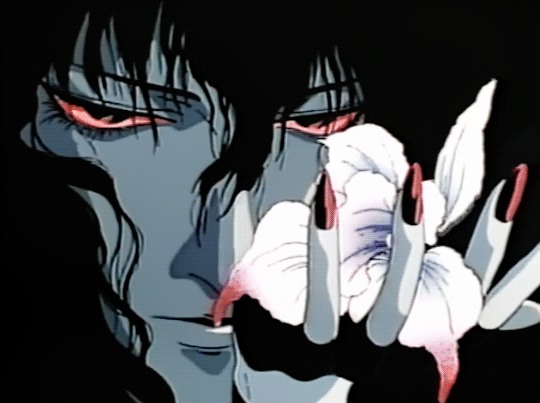
So this evening we’re going to pick out two of his works from this period in the new OVA format...
Let’s start with Bride of Deimos (悪魔 (デイモス)の花嫁). (Unfortunately I can’t display ruby text on Tumblr, but imagine that デイモス is written above the first two kanji.)
Bride of Deimos was an interesting beast: a shōjo horror manga by writer Etsuko Ikeda and illustrator Yuuho Ashibe with a a very classic-shōjo, Year 24 Group-esque visual style. (Beyond ‘authors of this manga’, it seems almost impossible to find out anything about either.) If I’m reading the plot summary right, revolves around a high school girl called Minako, who is the reincarnation of a demon Venus, the twin sister of an incestuous demon named Deimos; she is reincarnating because was executed by the demons for her incest crimes but the original soul seems to be out there somewhere? Deimos wants to bring Minako back to the underworld so Venus can possess her body again; Minako would prefer not to, and she’s got a lot of jealous people and suitors to fend off in the meantime thanks.
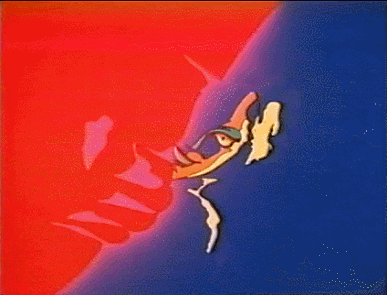
The manga ran a solid 26 years, from 1974 all the way to 1990. Rintaro could obviously not adapt something of that scope, and his 1988 OVA excerpts just one chapter from the whole epic for a half-hour OVA. It revolves around a brother-sister pair, the brother raising orchids and taking care of a disabled sister, who are both very yandere over each other. Into this whole mess stumbles Minako.
So expect a lot of very gothic imagery; it’s worth noting that Madhouse had adapted Vampire Hunter D just a few years earlier, and I think you can see the influence in its character design. There’s at least one very elaborate sequence of background animation which you can see above; unfortunately sakugabooru do not seem to know who animated it.
And then, just a few years later, we have Teito Monogatari (帝都物語), known in English as Doomed Megalopolis.
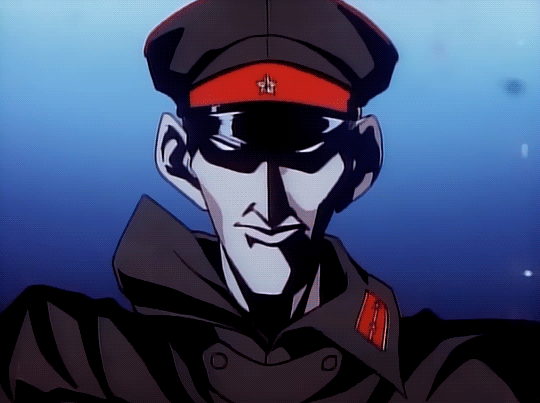
The original Teito Monogatari (1983-7) was a sprawling historical epic serial novel crossing basically the entire 90s, following the occult works of an immortal warlord of the Taira clan who led a failed rebellion against the central government (the same Taira clan whose fall is chronicled in the Heike Monogatari, c.f. Animation Night 91) and has now become a ghost serving the same empire. In the present, he is succeeded by Yasunori Katō, a former soldier in the imperial Japanese army who is in fact a vengeful oni working for 90 years to bring about the downfall of the Japanese Empire, bringing him into conflict with a long list of historical figures...
His ruinous ambitions bring him into conflict with some of 20th century Japan's greatest minds including industrialist Eiichi Shibusawa, onmyoji Abe no Seimei's descendant Yasumasa Hirai, authors Koda Rohan and Izumi Kyoka; physicist Torahiko Terada, and author Yukio Mishima. The resulting conflict, involving science, magic and politics; spans 90 years of Japan's history.
The story begins near the end of the Meiji period and ranges through the rest of the century. It reinvents major events such as the Great Kantō earthquake [in the story, the work of Katō and his allies], the founding of Japan's first subway, the February 26 Incident, the firebombing raids, the signing of the 1960 US Security Pact, and the ritual suicide of Yukio Mishima. The narrative finally reaches its climax in 1998, the 73rd year of a fictional Shōwa period.
The overall structure of the narrative seems to be that Katō comes up with various dastardly plans to destroy Tokyo, and is stopped by these historical figures (and original characters), deferring the destruction of Tokyo to later and later dates. In that regard it seems to fit the onryō mode, where the monster really is a victim of something terrible but nevertheless needs to be stopped. How that reflects on the subject of nationalism it raises so centrally, I’m not sure, and I’m curious to find out! e.g. it’s curious to me that it’s the villain Kato, despite fighting on behalf of indigenous people crushed by Japan, who dresses in the sinister, Nazi-like uniform of an Imperial Japanese Army officer.
This story proved wildly popular, and caused a resurgence of interest in mysticism, such as onmyōdō and feng shui, as well as the classic figure of the oni. It inspired numerous adaptations (one by Takashi Miike!) and subsequent works in the same vein in literature and manga.
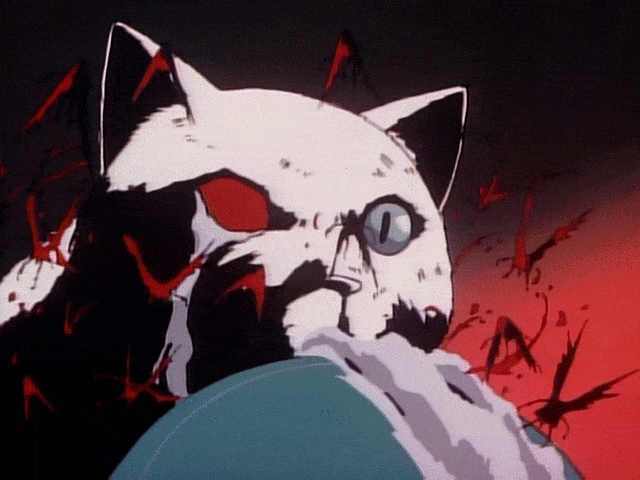
By the time Rintaro got to it, there had already been one successful tokusatsu adaptation of the first four chapters in 1988 by Toho, which had received wide acclaim. There had also been a certain OVA called Urotsukidōji, discussed back on Animation Night 69, which proved that sex and violence were very in - and as a result, this OVA went a lot harder than earlier Rintaro works or indeed previous adaptations of Teito Monogatari. Hoping to distinguish his take from previous adaptations, Rintaro emphasised the supernatural aspects - the things it was possible to display with elaborate effects animation. And thus animators like Tatsuyuki Tanaka provided suitably gruesome imagery.
The series spans four episodes, each about forty minutes, all overseen by Rintaro but directed respecitively Kazuyoshi Katayama, Koichi Chigira, Kazunari Kume and Masashi Ikeda. Like Toho’s take, it focuses on the first four chapters, spanning the period 1912-1928, in which the Meiji government was rapidly industrialising Japan and transforming it into a colonial power to stand against the Europeans; not long before the story starts, Japan had annexed Korea in 1910. Beyond his earthquake shenanigans, Katō schemes to possess a girl called Yukari Tatsumiya and her daughter Yukiko. A full-on wizard war ensues.
And I think that’s enough time writing. So, if you will join me tonight, we’ll be watching Bride of Deimos followed by all four episodes of Teito Monogatari (Doomed Megalopolis)! Starting shortly on twitch.tv/canmom - hope to see you there!
6 notes
·
View notes
Photo
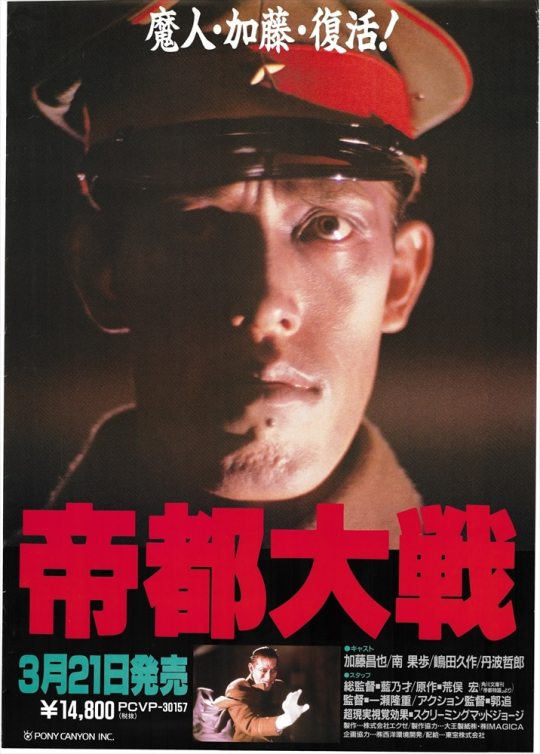
10 notes
·
View notes
Text
Tubi TV Adds the Doomed Megalopolis Anime to Its Service
Tubi TV Adds the Doomed Megalopolis Anime to Its Service
The Fandom Post is reporting that Tubi TV has added the Doomed Megalopolis anime to its service. The anime is available with both the English dub and the original Japanese audio with English subtitles.
Doomed Megalopolis is described as:
Yasuori Kato, an oni who mastered the art of onmyodo and shugendo, is determined to destroy the Imperial Capital Tokyo to appease the grudges of his ancestors.…

View On WordPress
2 notes
·
View notes
Text
ARTICLE DATE: 8.4.2021
0 notes
Note
I see you're into jujutsu Kaisen, have you seen the netflix Onmyoji? it's an adaptation of the novels, I think you would like it a bit.
I actually hadn't heard of that before, I only knew of the life action movie that's supposed to come out soon. Not sure if that is also based on the Yumemakura novels, but it is about Abe no Seimei. I also watched Onmyouji: The Ying-Yang Master at some point, but that was a while ago. While the artstyle isn't super my thing, I'll definitely check out the new anime at some point. Always a fan when people include onmyoudou in their work, I wish jjk would lean more into it, especially in regards to hand signs and chants.
If you don't already know it, I can also recommend Teito Monogatari to you or it's anime adaptation Doomed Megalopolis. It's what inspired the Onmyouji novels. I think it's a bit darker than Onmyouji, but I like the horror in it. Kato Yasunori is also an interesting character.
6 notes
·
View notes
Text
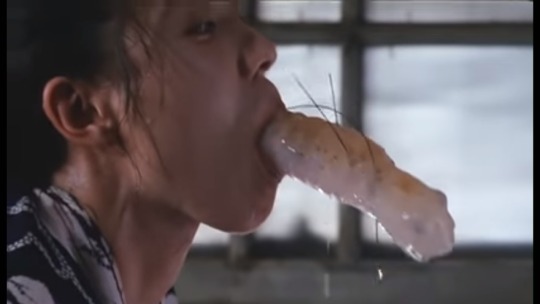
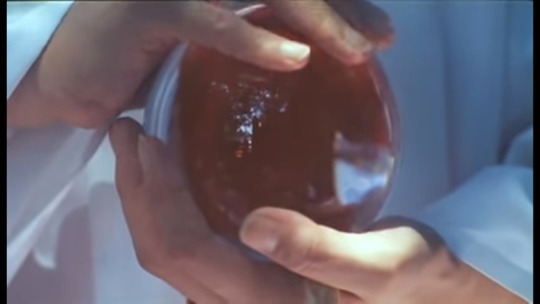
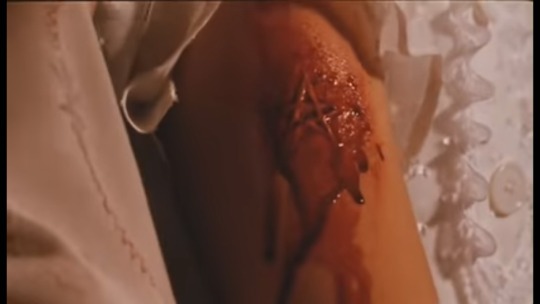
tokyo: the last megalopolis
3 notes
·
View notes
Text
Anyway. I'm going to finish watching Doomed Megalopolis and head down to the salon.
4 notes
·
View notes
Photo


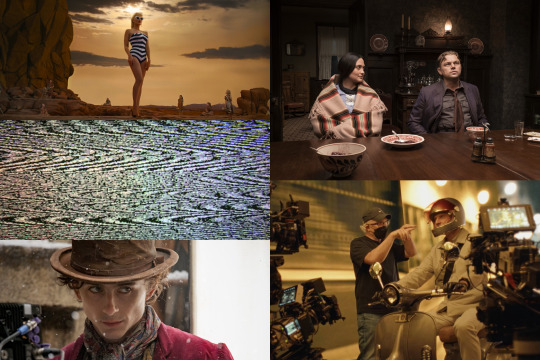
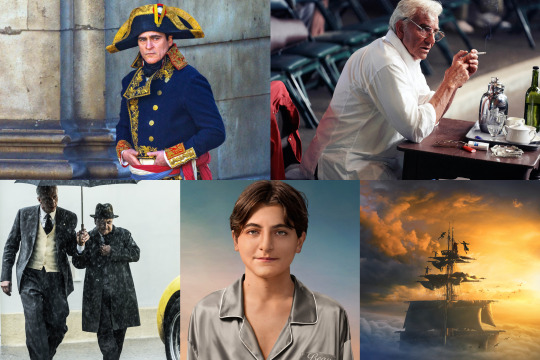

My 25 Most Anticipated Films of 2023!!
No intro this year. Just, y’know, here they are...
PHOTO ONE:
1. Infinity Pool (Brandon Cronenberg) – 1.27.23
Haaaave you seen Possessor?!? Plus, that trailer!!
2. Ant-Man and the Wasp: Quantumania (Peyton Reed) – 2.17.23
Bring on Kang...
3. John Wick: Chapter 4 (Chad Stahelski) – 3.24.23
I’ll never not be excited to see Keanu kill the shit out of people.
4. Renfield (Chris McKay) – 4.14.23
Nic Cage as Dracula... I repeat, Nic Cage as Dracula!!
5. Guardians of the Galaxy Vol. 3 (James Gunn) – 5.5.23
The trailer alone has me more emotionally invested than anything I saw in 2022, period.
PHOTO TWO:
6. Spider-Man: Across the Spider-Verse (Dos Santos, Powers & Thompson) – 6.2.23
Haaaaaave you seen the first one?!?
7. Asteroid City (Wes Anderson) – 6.23.23
Wes is one of my very favorite directors. Enough Said.
8. Indiana Jones and the Dial of Destiny (James Mangold) – 6.30.23
If you’re actually questioning why this is here, you clearly did not know how obsessed I was with Temple of Doom and Last Crusade as a little kid.
9. Mission: Impossible – Dead Reckoning – Part One (Christopher McQuarrie) – 7.14.23
Cruise can do no wrong... until he does... but even then the footage of his death will be a fucking blockbuster, and all his fans will give him the exact sendoff he’s apparently begging for. Can’t wait to see how he almost dies, this time.
10. Oppenheimer (Christopher Nolan) – 7.21.23
So very excited to see Nolan take on something more dramatic... plus, look at that cast!!!
PHOTO THREE:
11. Barbie (Greta Gerwig) – 7.21.23
Margot and Greta... enough said. Oh, but I’ll say more... we live in a world that will soon be home to a Barbie movie co-written by Noah Baumbach!! That’s beautiful.
12. Dune: Part Two (Denis Villeneuve) – 11.3.23
The first felt too unfinished to not be excited to see where Villeneuve brings it next.
13. Wonka (Paul King) – 12.15.23
Really couldn’t care less about Chalamet, and this project is totally unnecessary. But... I’m a die-hard Roald Dahl fan, and this is directed by the man who gave us Paddington 2, so... yeah.
14. Killers of the Flower Moon (Martin Scorsese) – TBD
C’mon... It’s Scorsese!
15. The Killer (David Fincher) – TBD
C’mon... It’s Fincher!
PHOTO FOUR:
16. Napoleon (Ridley Scott) – TBD
I love Ridley Scott... and Joaquin Phoenix looks like he’s going to murder this role.
17. Maestro (Bradley Cooper) – TBD
The theatre geek living deep down within me is enough reason. But then I also want to see if A Star Is Born was a fluke.
18. Ferrari (Michael Mann) – TBD
Michael Mann directing a movie about Enzo Ferrari starring Adam Driver... why aren’t you excited about it?!?
19. Beau Is Afraid (Ari Aster) – TBD
No clue what we’re in for... but I’m certain it’s going to fuck me up for a week or two.
20. Peter Pan & Wendy (David Lowery) – TBD
David Lowery... enough said. I mean, seriously, have you seen A Ghost Story or Pete’s Dragon?!?
PHOTO FIVE:
21. Lee (Ellen Kuras) – TBD
If Kate Winslet wasn’t enough... well, it is... it really is.
22. Blitz (Steve McQueen) – TBD
It’s McQueen doing a WWII drama starring Saoirse Ronan...
23. Megalopolis (Francis Ford Coppola) – TBD
I’m hoping it’s as wild as those set photos have been...
24. The Way of the Wind (Terrence Malick) – TBD
Malick does Jesus...
25. The Wonderful Story of Henry Sugar (Wes Anderson) – TBD
I doubt this is actually going to release in 2023, but it is already in post, so in case does, I really need you all to know just how excited I will always be for new Wes Anderson.
There they are!
As for My Best of 2022, once again all of the major lists will not be getting posted until mid/late January, but I’m going to try to get some of the early lists – such as Posters, TV & Non-2022 Films – sorted and posted over the next week or two. Please Feel Free to Follow Along So You Don’t Miss Anything!
Stay Tuned!
-Timothy Patrick Boyer.
#movies#most anticipated#cinema#barbie#oppenheimer#2023#Christopher Nolan#killers of the flower moon#Martin Scorsese#asteroid city#wes anderson#beau is afraid#film
43 notes
·
View notes
Text
Recently Viewed: Angel’s Egg
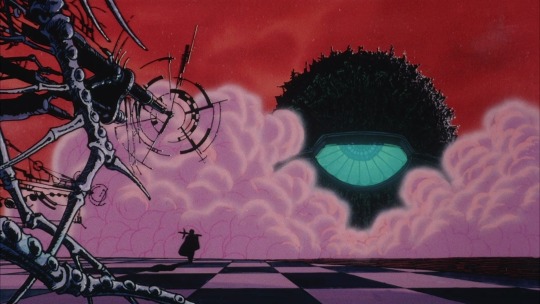
In the 1980s and 1990s, a lot of anime was produced exclusively for the booming home video market. Freed from the more stringent censorship guidelines associated with traditional distribution models (theatrical, television), these relatively low-budget “OVAs” became synonymous with “Mature Content,” a misleading label that in this context alludes to extreme violence and sexually explicit material (see: Demon City Shinjuku, Wicked City, Doomed Megalopolis)—superficial pleasures that are not totally without merit, but are nevertheless rather juvenile. Angel’s Egg, however, is genuinely mature; this hidden gem—which has only recently been rediscovered and critically reevaluated after being largely dismissed upon its initial release—is thematically rich, emotionally resonant, and exquisitely crafted. I don’t know if I even possess the language required to articulate what makes it so utterly compelling… but that will hardly discourage me from trying anyway.
The film begins with a tight closeup on a pair of small, delicate hands. Gradually, the thin wrists rotate, allowing the viewer to observe the creases in the pale flesh, the lines on the palms, the faint sheen on the nails; the joints audibly crack and pop as the fingers flex, curling into clenched fists. This minute attention to detail permeates every subsequent frame. Individual strands of hair billow gracefully in the breeze, mirroring the swaying motion of rustling grass. The reflections of gnarled tree branches ripple on the deceptively placid surface of a subterranean lake. Later, this same body of water slowly envelops our heroine’s calm, tranquil features as she sinks into its dark, icy depths.
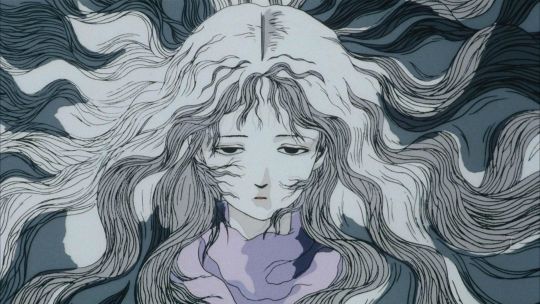
Although director Mamoru Oshii (Ghost in the Shell) provides fluid movement and a hypnotic rhythm, Yoshitaka Amano (whose cinematic credits include Belladonna of Sadness, but who is probably better known in the United States for his Final Fantasy concept illustrations) contributes the vital framework, sculpting the visual style and establishing the oppressively bleak, haunting tone. His character designs, of course, are instantly iconic. The protagonist is particularly striking; her skin is so immaculately white that it almost appears to radiate light, starkly contrasting the dull, drab, monochromatic gray shade of the setting—a nightmarish realm of carved stone, shattered glass, and petrified bone wherein the inhabitants resemble the surrounding gargoyles and solid objects are indistinguishable from their own shadows. The backgrounds are equally evocative: barren, desolate wastelands stretch out for miles beneath the blood red sky, while the architecture is a surreal, chaotic amalgamation of Gothic cathedrals, industrial factories, and techno-organic horrors beyond human comprehension.
As for the plot… well, to be perfectly honest, it’s far too minimalistic to be properly summarized. Indeed, attempting to describe the story in literalist terms is inherently futile; the narrative is entirely figurative, revolving around such recurring motifs as feathers, fish, machinery, moisture, and incubation. Naturally, I have my personal theories regarding the intended “meaning” behind these cryptic symbols (they could represent the conflict between religion/spirituality and rationality/skepticism, for example), but I would prefer to avoid delving into concrete interpretation; to dissect the movie from an academic, intellectual perspective would merely diminish the captivating beauty of its ambiguous subtext.
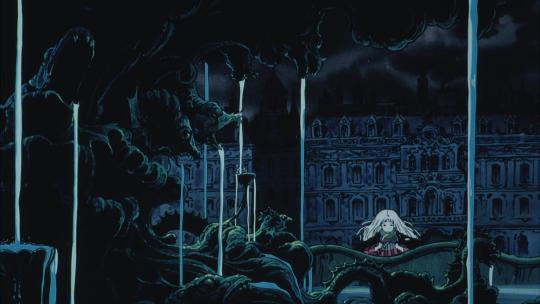
Ultimately, Angel’s Egg is unlike anything that I’ve previously encountered. Sure, it’s possible to identify a few obvious artistic influences (H.R. Giger, Alejandro Jodorowsky, Andrei Tarkovsky), but such shallow Easter egg hunts are fundamentally reductive when applied to films as singularly unique as this. In an industry defined by repetitive formulas and generic archetypes, Oshii and Amano created a defiantly unconventional, experimental, avant-garde masterpiece. I’m glad that I was able to experience it on the big screen, alongside an enthusiastic audience—thank you, Japan Society!
#Angel's Egg#Yoshitaka Amano#Mamoru Oshii#Japan Society#Japanese cinema#Japanese film#Japanese animation#anime#animation#film#writing#movie review
6 notes
·
View notes
Text
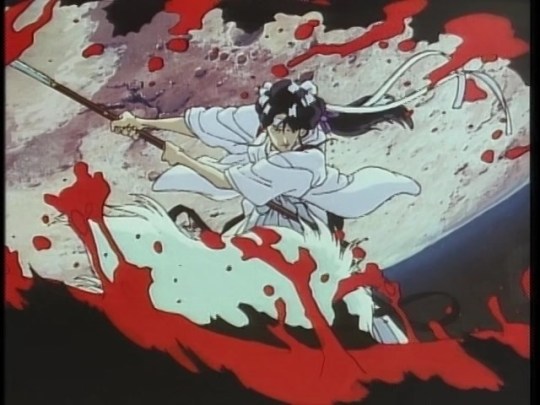

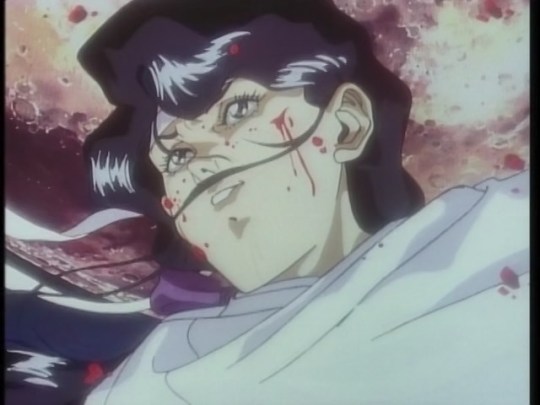
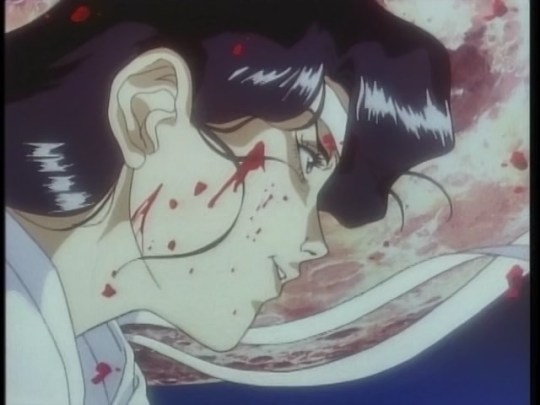
Watched Doomed Megalopolis/Teito Monogatari and it was a bit of a ??? experience but they got it right with the miko lady slicing up demons with her naginata
3 notes
·
View notes
